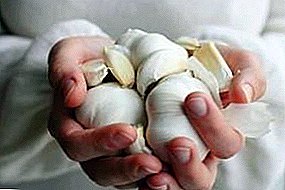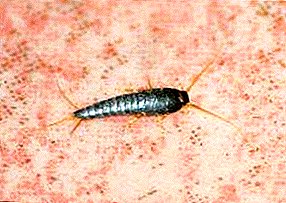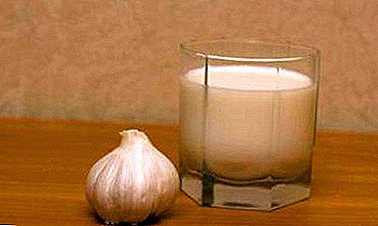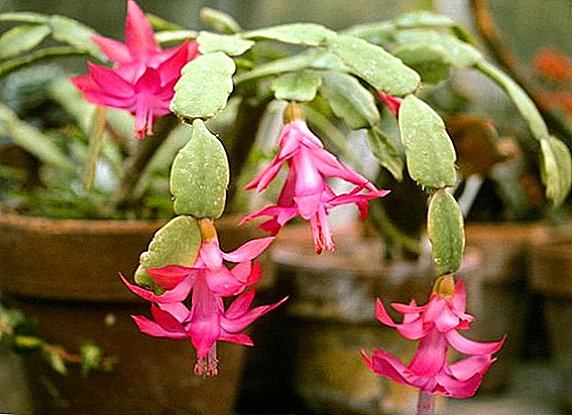 Smashing flower beds and flower beds at the dacha, each owner thinks about what to plant in these areas. The preference, first of all, is given to flowers unpretentious, not capricious to weather conditions and in leaving. One of these plants is ratibida (Mexican hat), and we will talk about its cultivation in this article.
Smashing flower beds and flower beds at the dacha, each owner thinks about what to plant in these areas. The preference, first of all, is given to flowers unpretentious, not capricious to weather conditions and in leaving. One of these plants is ratibida (Mexican hat), and we will talk about its cultivation in this article.
Botanical description
Ratibide colonic - representative of the Compositae family. The herbaceous plant is formed by a small bush, up to 0.6 m high. The young shoots are green with a fleecy edge, they woody as they grow older. The plant has a developed root system of the core type with several processes. The leaves are also pubescent, gray-green, planted opposite, narrow, elongated to 15 cm.  A sombrero blooms at the end of June, usually blooms for about two months, under favorable conditions it can bloom through October inclusive. It should be noted that the plant may not bloom immediately, but only in the second year after sowing. Large inflorescences up to 8 centimeters in diameter with an unusual core. It has the shape of a cone, rising above the petals, covered with miniature, first green, and as it grows yellow flowers that fly around when the seeds ripen.
A sombrero blooms at the end of June, usually blooms for about two months, under favorable conditions it can bloom through October inclusive. It should be noted that the plant may not bloom immediately, but only in the second year after sowing. Large inflorescences up to 8 centimeters in diameter with an unusual core. It has the shape of a cone, rising above the petals, covered with miniature, first green, and as it grows yellow flowers that fly around when the seeds ripen.
The family Asteraceae may also include such plants as: Osteospermum, doronicum, rudbeckia, daisy, venidium, helenium, gelihrizum, endive, brahikomu, ageratum, tsiniyu, chamomile, Echinops Sphaerocephalus, Arctium tomentosum, Ligularia przewalskii, milk thistle, artichoke and H. arenarium .Petals can be painted in various shades of red: dark cherry, burgundy, purple; may be the color of chocolate, on the edge of the petals there is a bright yellow frame. Seeds ripen in October. The vitality of ratibida in natural conditions is provided by self-sowing, falling to the ground, the seeds are fixed in the soil and give viable offspring.
Spread
The homeland of the Mexican hat is North America, the area of distribution stretches from the southern territories of Mexico through the western regions of the USA to the north of Canada. Unpretentious to the growing conditions of ratibida occurs in the mountains and plains, in desert prairies. Adjacent to a person, a flower may settle near noisy roads, along railway embankments, in wastelands, around dwellings. 
Did you know? The naturalist Samuel Rafinesq, who discovered the ratibid, made a significant contribution not only to the study of the flora and fauna of the continent, but also to the study of the culture and life of the ancient North American peoples. It was his work gave impetus to the study of the writing of the Mayan Indians.
Application in the garden and landscape design
Sombrero applications in landscape design are not so few:
- flower beds;
- rabatki;
- curbs along the garden paths;
- mixborders;
- lawns;
- in containers;
- in gravel-covered gardens.
 Sombrero gets along well with its neighbors:
Sombrero gets along well with its neighbors:- rudbeckia;
- Echinacea;
- yarrow;
- aster;
- coriopsis;
- marigolds.
Planting and care at home
Caring for a plant of labor will not make up, the main condition for its development is to initially choose the right place and prepare the site.
Choosing a landing site
A Mexican hat needs sunlight at least half a day, it tolerates a slight shadow. The vitality of the ratibida is simply amazing: drought-resistant, frost-resistant (plus return frosts), not afraid of heat, survives even when flooded with melt water, winters without shelter. The plot is open, sunny, with a deep location of groundwater.
Read also about such unusual colors as: sundew, hauttuynia, passionflower, nepenthes, hoya, vallota, camellia and amorphophallus.
Soil and fertilizer
For plants suitable loamy or sandy soil, light, loose, nutritious. If at the site of heavy clay soil, it is prepared in the fall: they dig up, flavoring dolomite flour and sand. The sombrero is not afraid of some soil salinization, but the preferred acidity is 6.6-7.8 pH.
Important! With fertilizers, it is advisable not to overdo it, otherwise the plant will throw all its strength to build green mass instead of flowering.It is enough to feed in the period of growth and the second time at the time of bud formation.
Watering and moisture
The Mexican hat does not need watering, it has enough natural rainfall. In exceptional cases, severe drought needs to be watered. Ratibide dislikes excess moisture neither in the root system, nor in the green mass. You need to water at the root, then loosen the soil.
Echinacea - how useful and how to grow in a flower bed.
Breeding
Ratibide breeds in three ways:
- seeds;
- cuttings;
- division of the bush.
Seeding seedlings
Sowing on seedlings carried out in early February. Pre seeds for about a month kept in the cold (on the door of the refrigerator). Since ratibida does not like transplanting, it is better to sow right away into individual cups. Soil is moistened before sowing, crops are placed on a bright window sill, under the film. Shoots hatch in 14 days.
Sowing seeds in open ground
In the southern regions, seeds are sown in open ground in March, in the northern regions - in the first decade of April. It is advisable to dig up the plot, lay grooves up to 2 cm deep and at a distance of 30 cm from each other. Sprinkle crops with soil, as germination weaker crops are removed, thinning the planting.
Cuttings
In principle, grafting sombreros practically does not apply, it is much easier to propagate by seed. For this method, cuttings are taken from a two-year-old plant, cut tops up to 7 centimeters long. Put in the ground immediately to a permanent place, hiding for a time rooting mobile greenhouse.
Dividing bush
The division of the bush is carried out only by experienced flower growers in order to rejuvenate the bush, since the core system of the ratibida is very fragile, and it may not settle down after the division. During the process, they try to separate the parts of the plant as accurately as possible in order to preserve the basal processes.
Important! When digging up a bush for separation, the soil is not shaken off the soil, thus increasing the chance of survival of the tree.
Seed collection
Seed collection begins in late October, you need to look at the color of the boxes: ripe, dark brown boxes, dry to the touch. The boxes are neatly cut, broken open over a sheet of paper or a piece of cloth. The resulting material is sorted from trapped garbage, stored in paper bags in a dry, dark place. 
Pests, diseases and prevention
Ratibide from those plants that are not touched by any pests or diseases. In case of inattentive care, namely, overwetting, it can fall ill with the powdery mildew characteristic of the asphalt flowers, and become infected with aphid.
Cultivation of acacia, vatochnik, muraiu, and hamedoreu from seeds.
To avoid this, take preventive measures:
- Before planting, carefully clean the area from plant residues.
- Water only when necessary.
- When fertilizers comply with moderate rates of nitrogen.
- During the budding period, they are fed with a complex of potassium and phosphorus, which increases the resistance.
- To protect the soil mulch peat.
- Conduct treatment Bordeaux liquid one percent.
Did you know? North American Indians used ratibida tea for medicinal purposes. The drink helped to relieve stomach pain, headaches, fever and fever.Ratibide will undoubtedly be a garden decoration for the whole summer season, because both foliage and inflorescence are decorative in it. It is not capricious, it has a long flowering and is good in fresh and dry bouquets.
Video: flower ratibida sombrero
Reviews from the network














